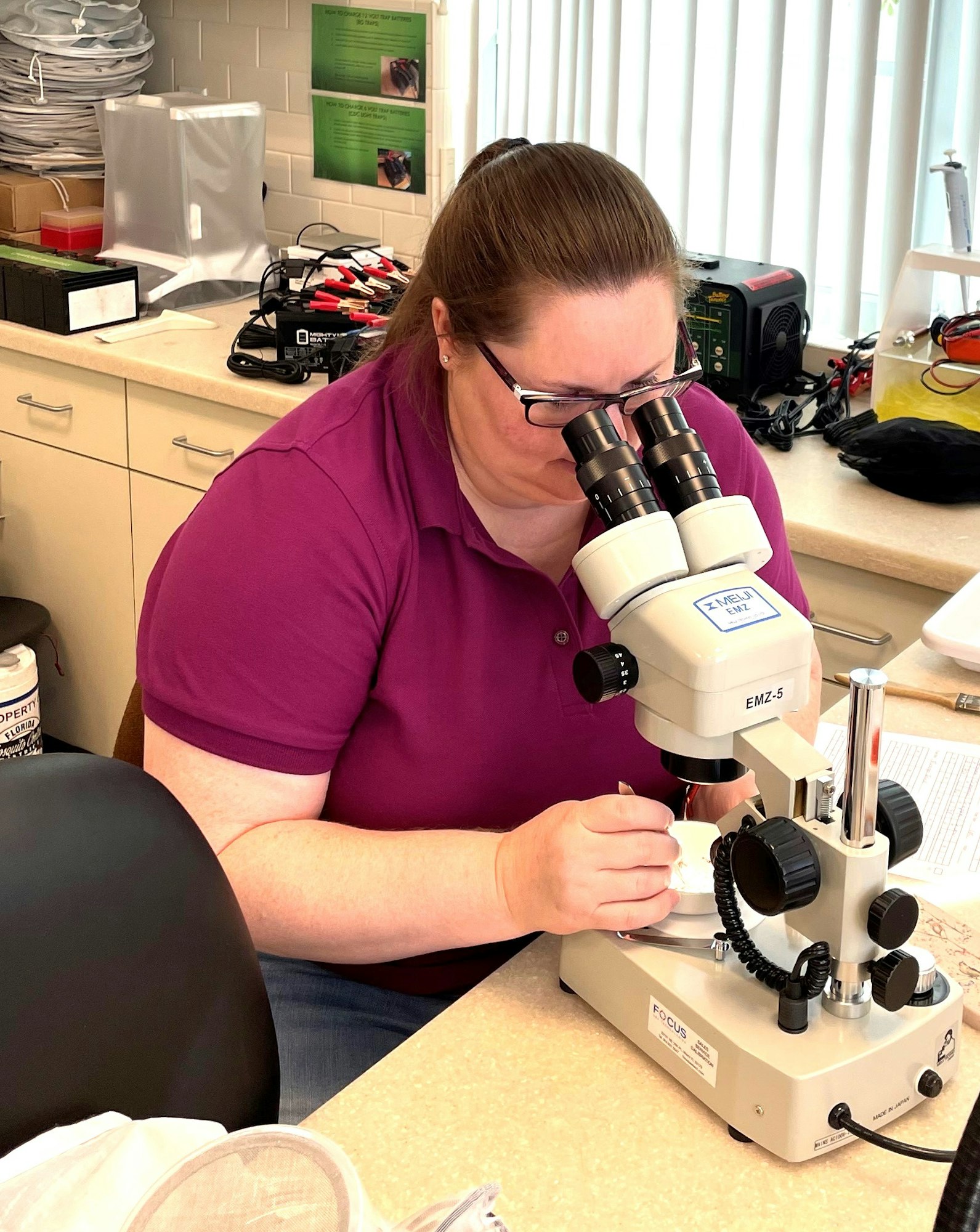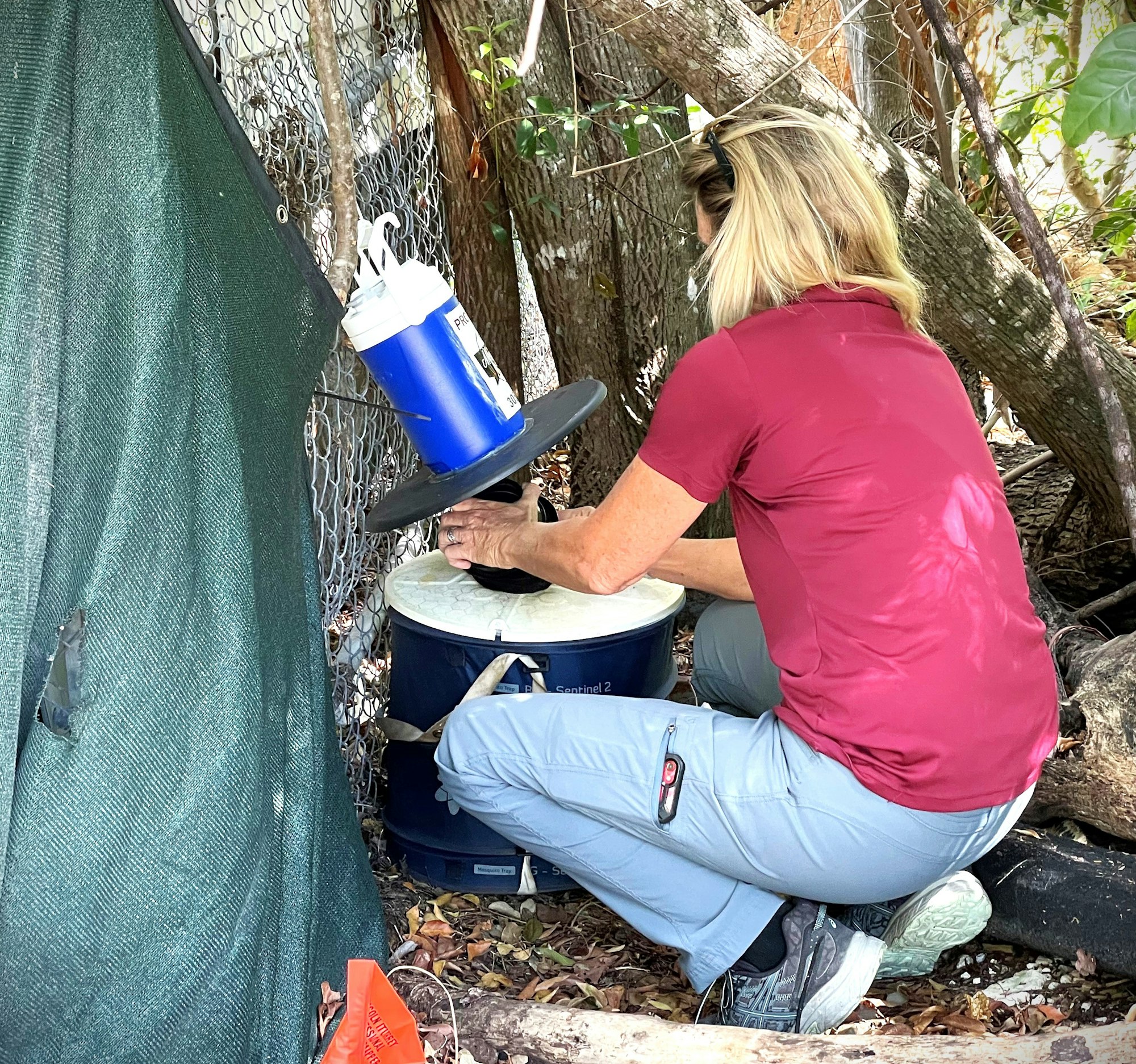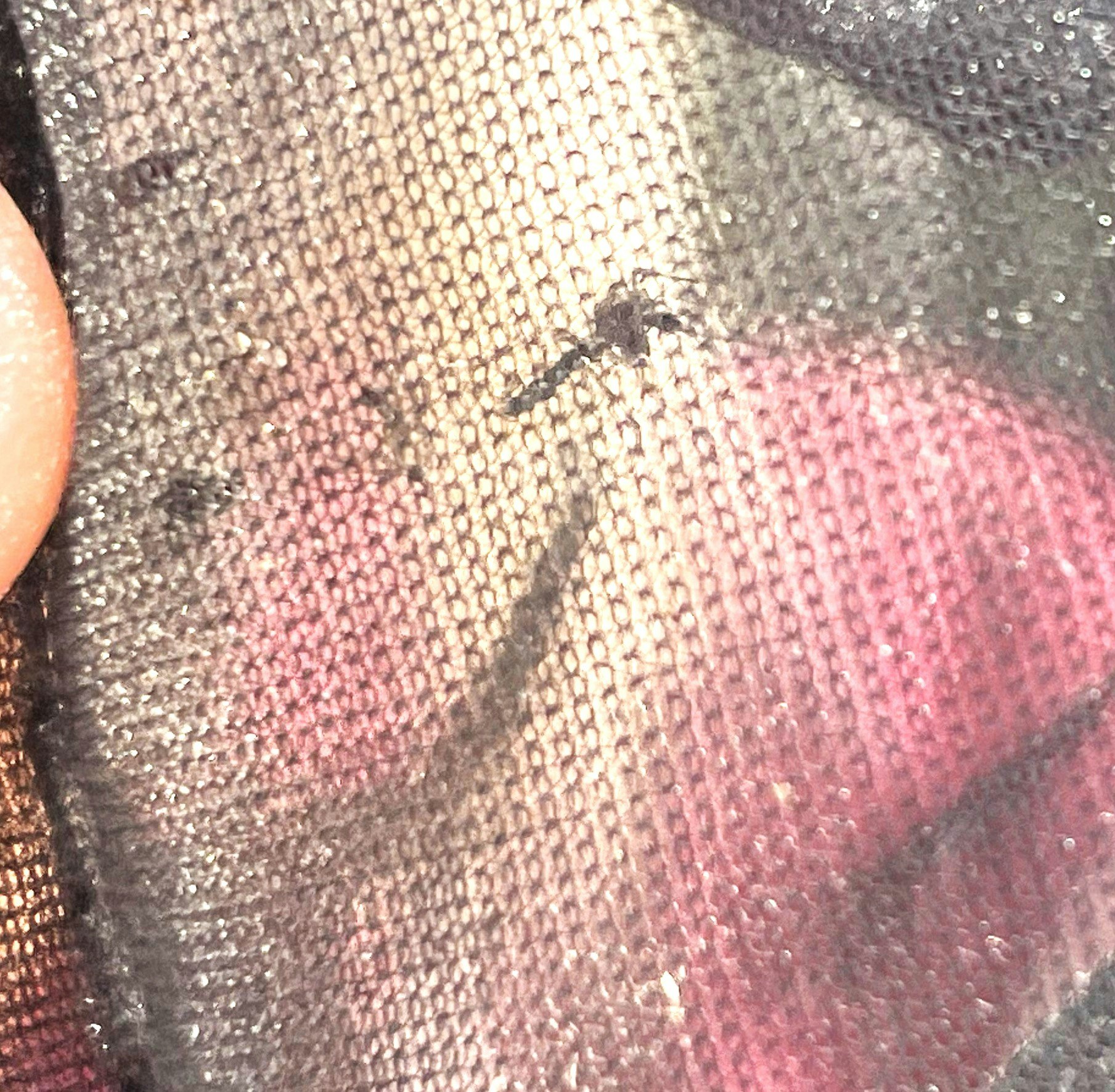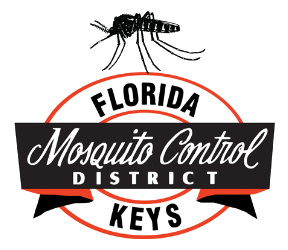Adult Mosquito Surveillance
Mosquito Surveillance Program
One of the best ways to keep tabs on the ever changing mosquito population in the Florida Keys is via 'mosquito surveillance'. FKMCD uses a variety of methods to constantly monitor the composition and density of the mosquito population at any given time:
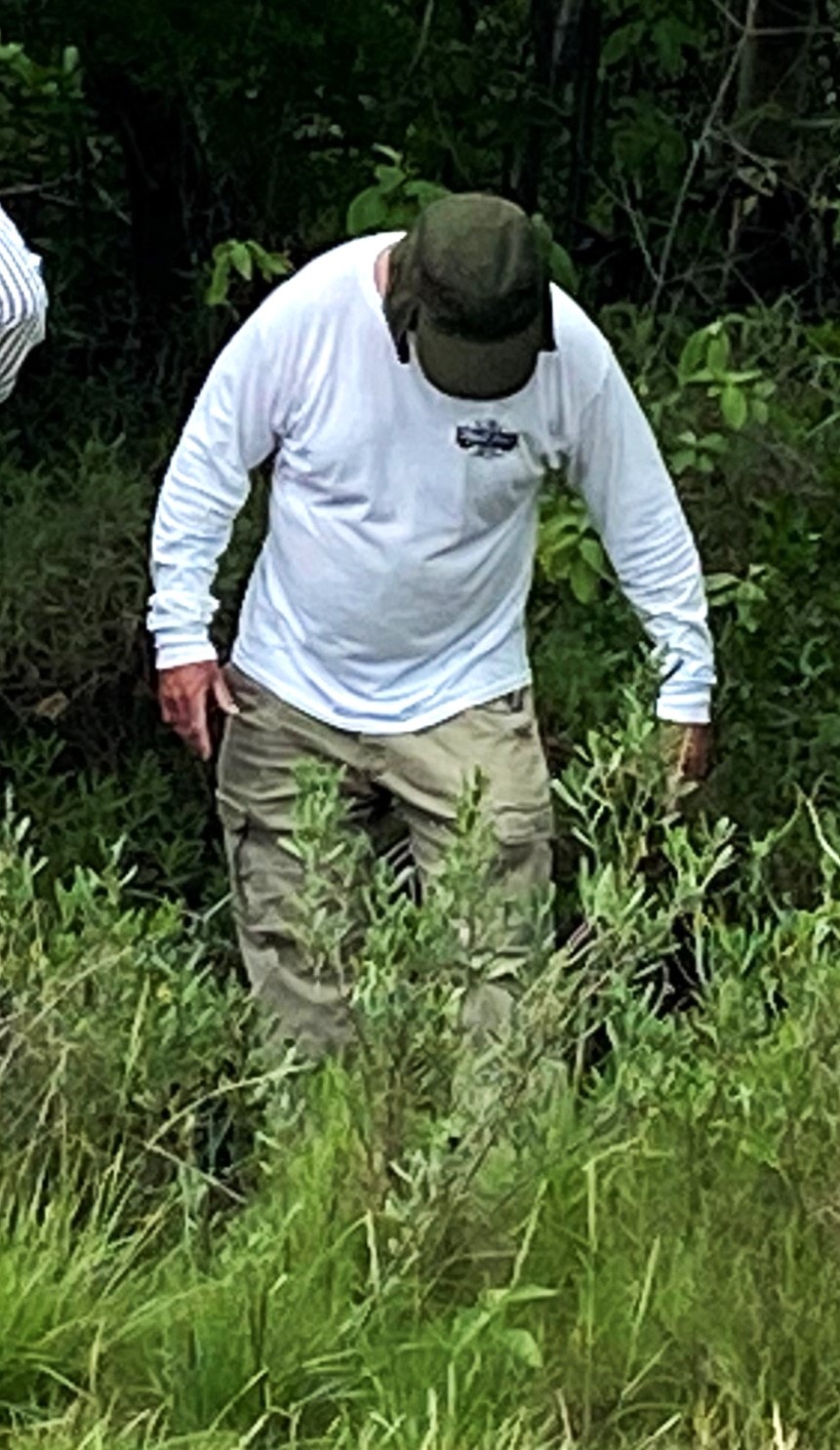
Landing Rate Counts: Landing rate counts are the primary method of adult mosquito surveillance employed by the Florida Keys Mosquito Control District. Inspectors visit the same count stations daily and count the mosquitoes that land on them and attempt to bite for one minute. There are over 350 count stations visited on a daily basis throughout the Keys. The information gathered by these inspectors allows the District to better assess the biting population of mosquitoes throughout the Keys and respond appropriately.
Automated Count Stations: Biologists with the Florida Keys Mosquito Control District are in the process of developing a means to augment the daily landing rate count with fully automated count stations. These special traps use high tech sensors and cameras to actually count the number of adult mosquitos entering them and transmit the data back to mosquito control offices. It is hoped that these automated count stations can be deployed into remote areas that are otherwise difficult to access on a frequent basis.

Adult Trap Collections: Another method for monitoring mosquito populations is the deployment of adult mosquito traps. The District utilizes a variety of traps to sample the adult mosquito population. One of the trapping methods utilized is the CDC light traps baited with carbon dioxide. These traps attract host-seeking female mosquitoes in search of a blood meal. The District monitors over 50 CDC light trap sites throughout the Keys on a weekly basis. Another collection method used by the district is the BG Sentinel trap. This particular trap has both visual and chemical attractants to lure host seeking mosquitoes into the trap. The BG Sentinel trap is specifically designed to attract the yellow fever and dengue carrying mosquito, Aedes aegypti. Because this mosquito breeds almost entirely in man-made containers, this trap is particularly useful in areas of higher human population density, such as Old Town, Key West. There are over 40 BG traps sites monitored on a weekly basis throughout the Keys. Other methods of adult collection include aspirators, and other specially designed traps.




